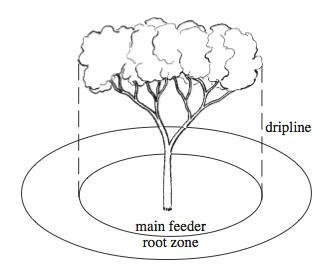Prepare your garden for growing fruit
Before planting fruits, check that soil and site conditions meet the requirements for tree fruits and small fruits.

Harvesting apples, cherries or berries is one of the most rewarding parts of having fruit crops in the garden. To reach this point, a gardener must first work on a variety of maintenance issues related to integrated pest management, proper watering, and most importantly, soil conditions. Soil type, pH and nutrient balance are factors that should be identified before any bare root fruit trees are put into the ground.
Soil pH
Testing the soil conditions prior to planting is essential to identify if your site is ready to grow and produce fruit. Most tree fruits and berries require soil pH in the range of 6.0 – 7.0. Blueberries are the exception, and they thrive in acidic soils with pH of 4.5 – 5.5. If you have not previously tested the soil and the leaves are yellowing, even after being sufficiently irrigated (Photo 1), this can be a sign of a nutrient deficiency or soil conditions that don’t match the requirements for fruits.
Soil pH can be increased with lime or decreased with sulfur. However, these changes take months to a year for an effect and are unlikely to modify soil pH beyond 0.5 – 1.0. Avoid overapplying any nutrients or fertilizer, or you risk creating an environment that will be toxic to the plants and cause leaves to yellow.
Other nutrients before planting
Site preparation is critical to keep tree fruits and small fruits on track for annual growth and eventual fruit production. When the site is ready for planting, be sure that the available area also matches the spacing requirements for an individual tree or bush. Most standard rootstocks require 25 x 25 feet at maturity, while dwarf varieties will need 8 – 12 feet of spacing.
The need to apply nitrogen and other nutrients will depend on the results of a soil test. Nothing should be applied into the planting hole. Instead, apply fertilizer as a band around the tree a few weeks after planting (Photo 2). Soil organic matter should be 2 – 5%. If organic matter is too low, compost or shredded leaves applied as mulch are good options to improve soil structure and moisture retention. Once your tree has become established in the ground, visit the Michigan State University Extension article, “Spring fertilization of garden fruits,” to learn more about the correct amount of fertilizer to apply annually.

If you are considering growing fruit or have recently started, MSU Extension’s Backyard Fruits 101 is an excellent online course that will prepare you to select, plant and maintain the many fruits that can be grown in Michigan.



 Print
Print Email
Email